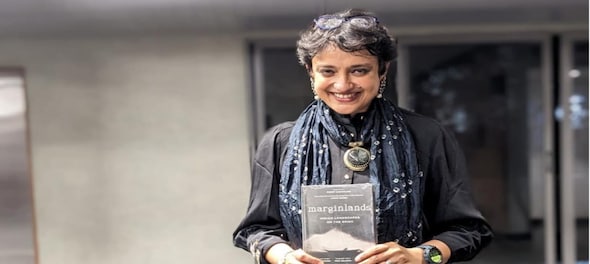
Independent photographer, writer, and National Geographic Explorer Arati Kumar-Rao has been documenting the changing landscape caused by climate change across South Asia. Through her photographs, she chronicles environmental degradation and how drastically depleting groundwater, habitat destruction, and land acquisition for industry devastate biodiversity.
Kumar-Rao also featured on BBC's list of 100 inspiring and influential women from around the world for 2023 names for "working to help their communities tackle climate change and take action to adjust to its impacts.”
In a conversation with CNBC-TV18.com, Kumar-Rao talks about her work, influences, and more. Here are the edited exceprts:
While you've worked a lot over the years, which is the one picture you're most proud of?
This is a tough question, like asking to choose between my babies! But if I had to pick one, it is the one shot in the mangroves, with the tide coming in and Sunanda Mandal standing in the center.

The reason it is dear to me is because walking in those swamps was not easy. You sink up to your knees in the soft sucking silty mudflats. And the mosquitoes are everywhere. So in the rising waters, as the tide rolled in, I held my camera high above my head and made that picture without even looking through the viewfinder to compose.
You capture a lot of different people and interact with different personalities. Who is that one person that you met that made a deep impression on you?
Undoubtedly the wise, kind, and gentle land ethics of Chhattar Singhji of Ramgarh. I have learned so much from him; it is more than I could have wished for a lifetime. I am filled with gratitude that I had the good fortune to spend hours and hours with him.
How did your journey as a photographer and as an environmental storyteller begin? When did you realise this was your passion?
Storytelling has always been my passion. When I was a kid, I would pore over National Geographic magazines and absorb as much as I could. There was a project by Mike Fay called The MegaTransect. He walked across the Congo Basin. Over three issues, the story unfolded. I knew then that is the kind of storytelling I wanted to do.
What drew you to peripheries and made you speak up about climate change?
My father has been speaking about environmentally harmful practices since I was a kid, whether it was agriculture, dams, or other harmful and inappropriate tech. This made a huge impression on me. When I started storytelling, there were no other types of stories I wanted to tell other than those of the land.
How has your journey been like? Especially since photography is essentially considered a male-dominated field.
My kind of storytelling, by definition, is slow. And that needs funds. It has been a struggle to get people to back a project that may not bear fruit for a whole year or more. But there have been some grants and grant-makers who have seen value in this kind of slow journalism and thank goodness for them.
Who has influenced you the most in life, both professionally and as a person?
Professionally, my mentors have been Prem Panicker and Paul Salopek. I have learned immensely from them and I owe a lot of my skills to their patient, rich, unparalleled guidance.
I have also been influenced by the aesthetics and visual imagery of Satyajit Ray and Tagore. And right from a young age, my father read from Wendell Berry’s poems and writings to me—his philosophy has been a guiding light. Rachel Carson’s works and Robin Wall-Kimmerer’s writings more recently have deeply influenced me.
What is that one thing that still keeps you passionate about your work?
The fact that the earth and this land are all we have. We have to stand for it, and do right by it. It is what supports us.
While everybody keeps emphasising on the importance of understanding climate change, there's very little that's been done by the masses. How, according to you, can we inculcate a sense of consciousness in the coming generations?
Again, I feel it comes back to reclaiming our connection with the land. If we can rejig our priorities so that we reconnect with the elements and what is right for keeping the land healthy, we will be on our way to climbing back out of the hole we’ve dug ourselves into!
(Edited by : Ajay Vaishnav)
Check out our in-depth Market Coverage, Business News & get real-time Stock Market Updates on CNBC-TV18. Also, Watch our channels CNBC-TV18, CNBC Awaaz and CNBC Bajar Live on-the-go!



